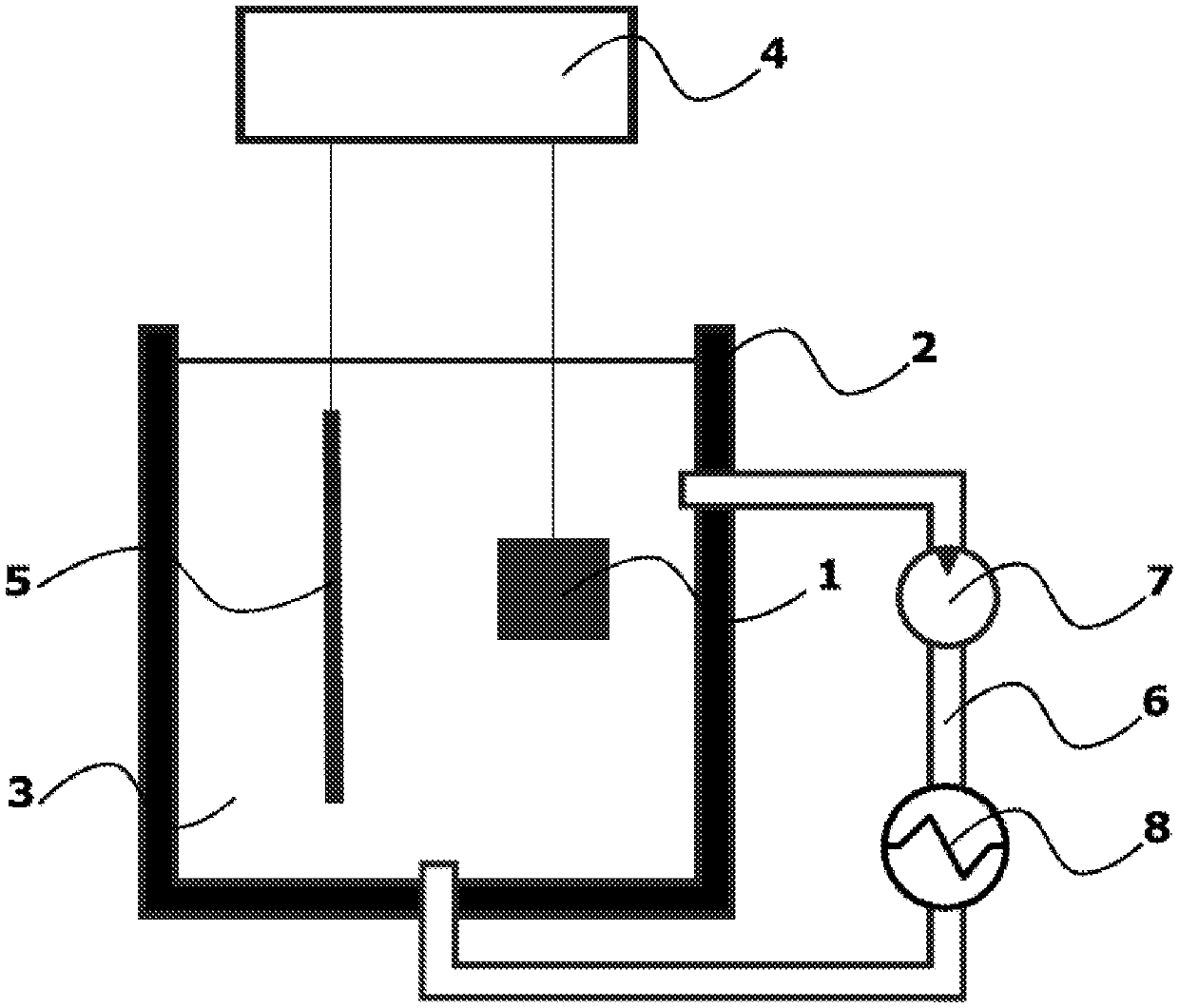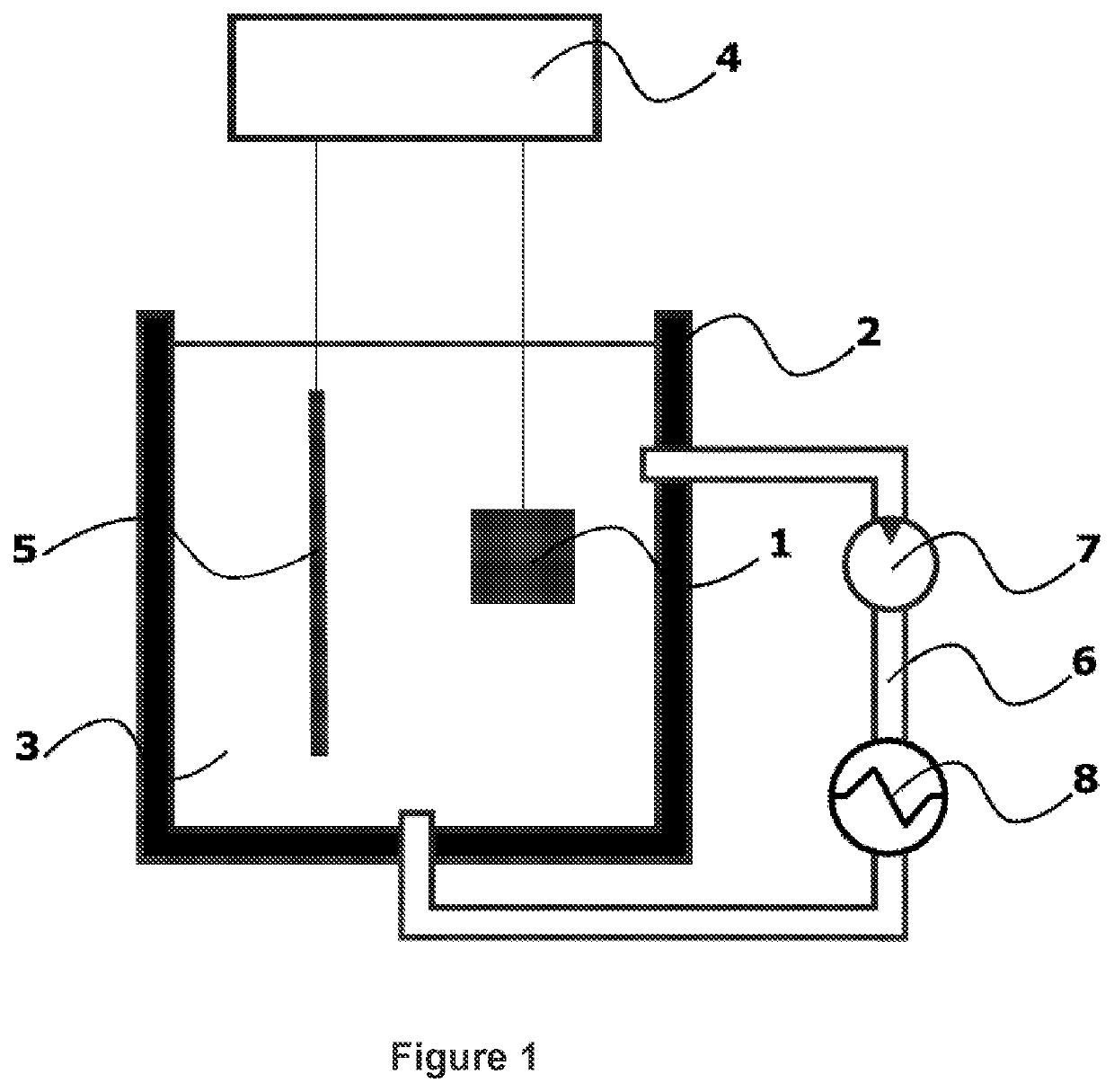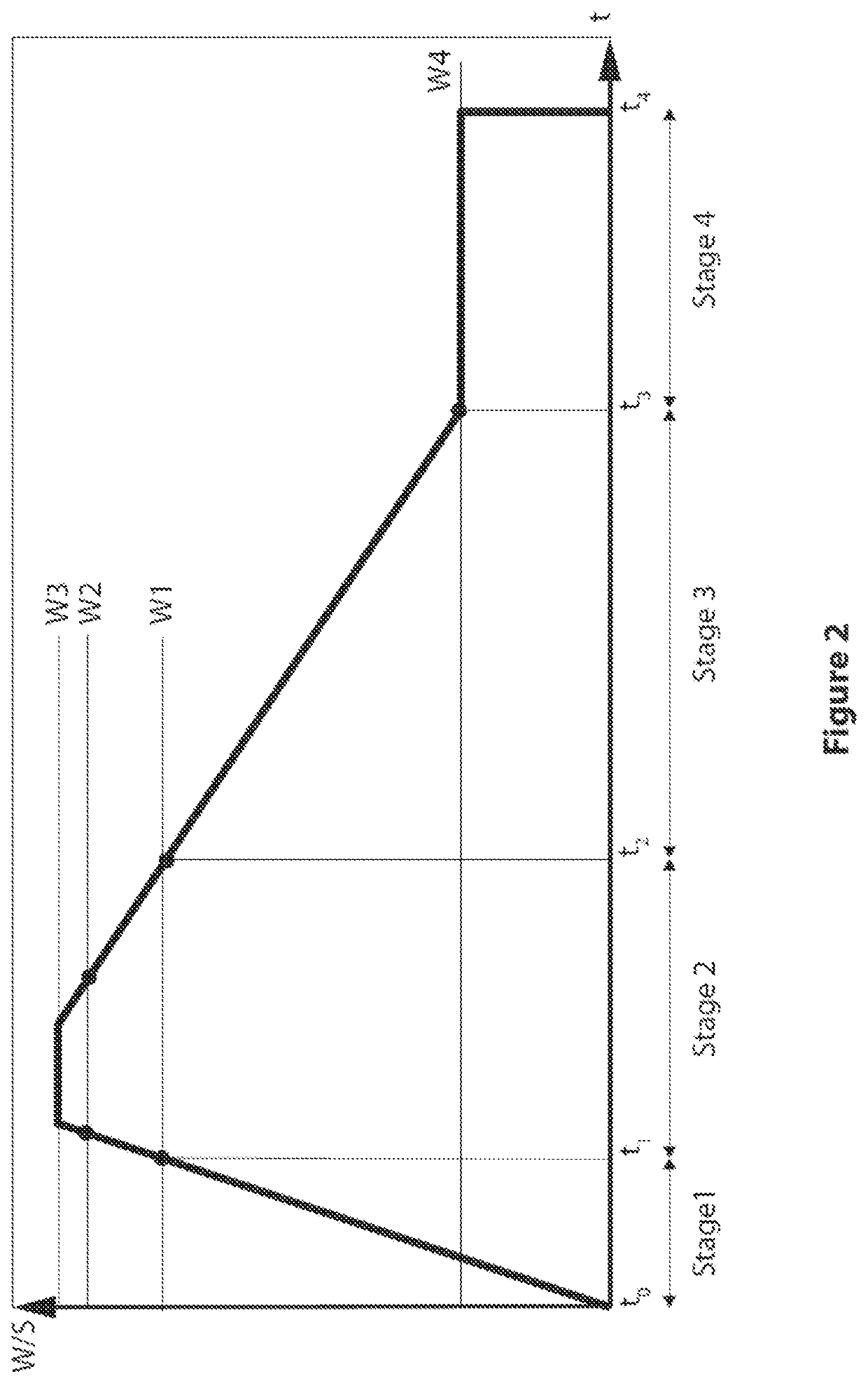Implant with ceramic coating, method of forming an implant, and method of applying a ceramic coating
a technology of ceramic coating and implant, applied in the field of metal implants, can solve the problems of compromising the coating barrier properties, unable to provide the properties of a strong physical barrier, and serious health problems
- Summary
- Abstract
- Description
- Claims
- Application Information
AI Technical Summary
Benefits of technology
Problems solved by technology
Method used
Image
Examples
example 1
[0146]Dental implant was made of titanium grade 5 alloy (Ti-6Al-4V) rod by turning. The surface was subsequently etched in a solution of hydrofluoric acid HF and hydrochloric HCl acid. Electrochemical oxidation was conducted in an electrolytic apparatus as described above and illustrated in FIG. 1. Total coated implant surface area was 0.06 dm2. The apparatus comprised a tank containing an electrolyte, and the implant and an electrode were coupled to a pulse power supply as illustrated in FIG. 1. The substrate and the electrode were arranged in contact with the electrolyte. The electrolyte was an aqueous solution containing 1.5 g / L of zirconium sulphate Zr(SO4)2, 2 g / L potassium pyrophosphate K4P2O7, 0.4 g / L potassium hydroxide KOH and 2 g / L zirconium oxide ZrO2 nano-powder, forming a stabilised colloidal solution.
[0147]The Pulse Generator applied a sequence of electrical pulses of alternating polarity between the substrate and the electrode. Pulse repetition frequency was 3 kHz. Pu...
example 2
[0159]Magnesium alloy AZ71 was used for making a biodegradable bone implant. The implant was manufactured by die casting and cleaned in alkaline bath. Ceramic coating was applied in order to provide slower implant weight loss and reduction in Mg alloy ion release in the blood plasma.
[0160]Electrochemical oxidation was conducted in an electrolytic apparatus as described above and illustrated in FIG. 1.
[0161]The electrolyte was an aqueous solution containing 2 g / L sodium fluoride, 2.5 g / L zirconium sulphate Zr(SO4)2, 3 g / L potassium pyrophosphate K4P2O7, 2.5 g / L potassium hydroxide KOH.
[0162]The 4 stage oxidation process lasted 14 min and it included stage one of 1 min duration, stage 2 of 4 min, stage 3 of 6 min and stage 4 of 3 min.
[0163]Formed coating contained oxides of magnesium MgO and zirconium ZrO2 and crystalline zirconium potassium phosphate of kosnarite type KZr2(PO4)3.
[0164]Formed coating had average thickness of 8 micrometres and roughness Ra=1.2 micrometres.
example 3
[0165]Pure tantalum Ta was used for making a porous intraosseous implant by additive manufacturing technique of 3D printing. After manufacturing, the implant was etched in a solution of nitric HNO3 and hydrochloric HCl acids.
[0166]Electrochemical oxidation was conducted in an electrolytic apparatus as described above and illustrated in FIG. 1.
[0167]The electrolyte was an aqueous solution containing 2 g / L of zirconium sulphate Zr(SO4)2, 2 g / L sodium pyrophosphate Na4P2O7, 0.5 g / L sodium hydroxide NaOH, 0.1 g / L silver sulphate and 3 g / L hydroxyapatite HA nano-powder, forming a stabilised colloidal solution.
[0168]The 4 stage oxidation process lasted 26 min and it included stage one of 3 min duration, stage 2 of 8 min, stage 3 of 12 min and stage 4 of 3 min.
[0169]Formed coating contained tantalum pentoxide Ta2O5, zirconia ZrO2 and hydroxyapatite. Sodium zirconium phosphate NaZr2P3O12 and silver sodium zirconium phosphate AgNaO8P2Zr are present in the coating. Formed coating had average ...
PUM
| Property | Measurement | Unit |
|---|---|---|
| Grain size | aaaaa | aaaaa |
| Grain size | aaaaa | aaaaa |
| Fraction | aaaaa | aaaaa |
Abstract
Description
Claims
Application Information
 Login to View More
Login to View More - R&D
- Intellectual Property
- Life Sciences
- Materials
- Tech Scout
- Unparalleled Data Quality
- Higher Quality Content
- 60% Fewer Hallucinations
Browse by: Latest US Patents, China's latest patents, Technical Efficacy Thesaurus, Application Domain, Technology Topic, Popular Technical Reports.
© 2025 PatSnap. All rights reserved.Legal|Privacy policy|Modern Slavery Act Transparency Statement|Sitemap|About US| Contact US: help@patsnap.com



